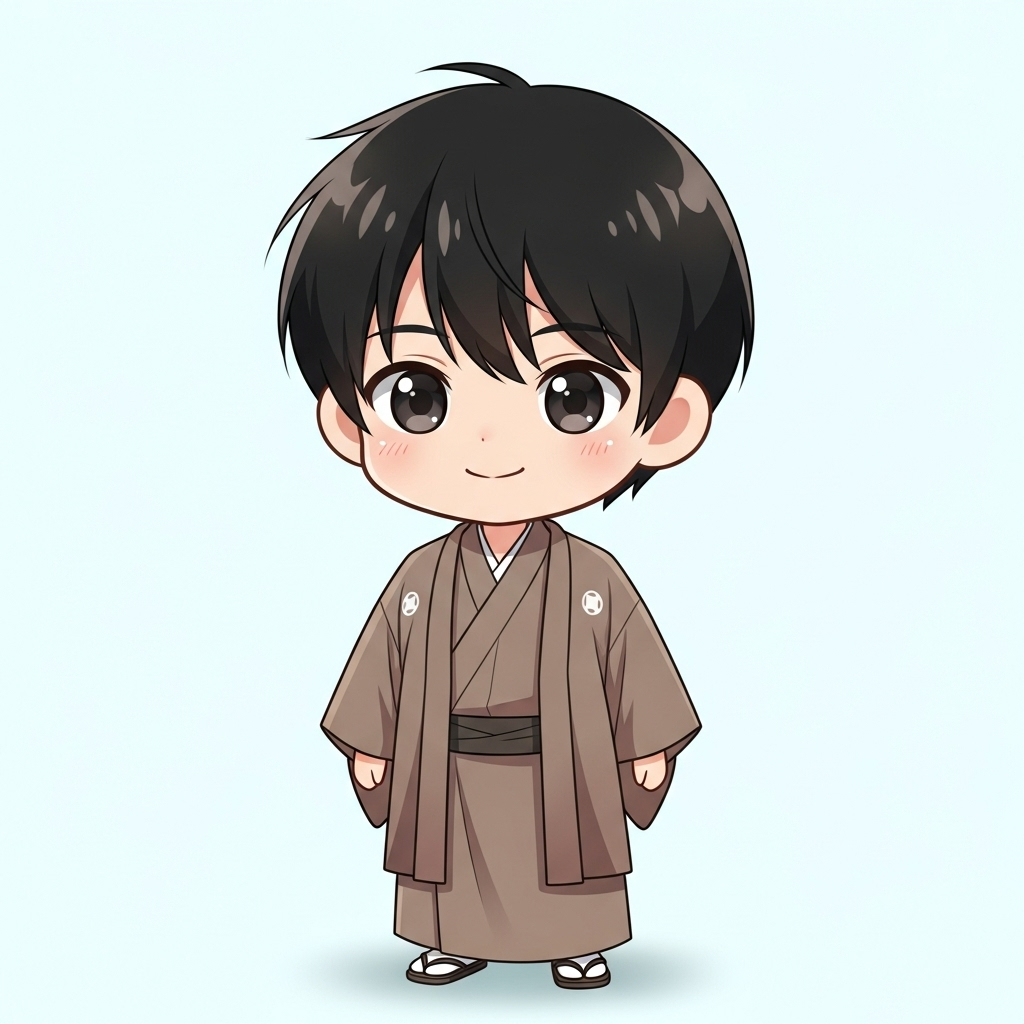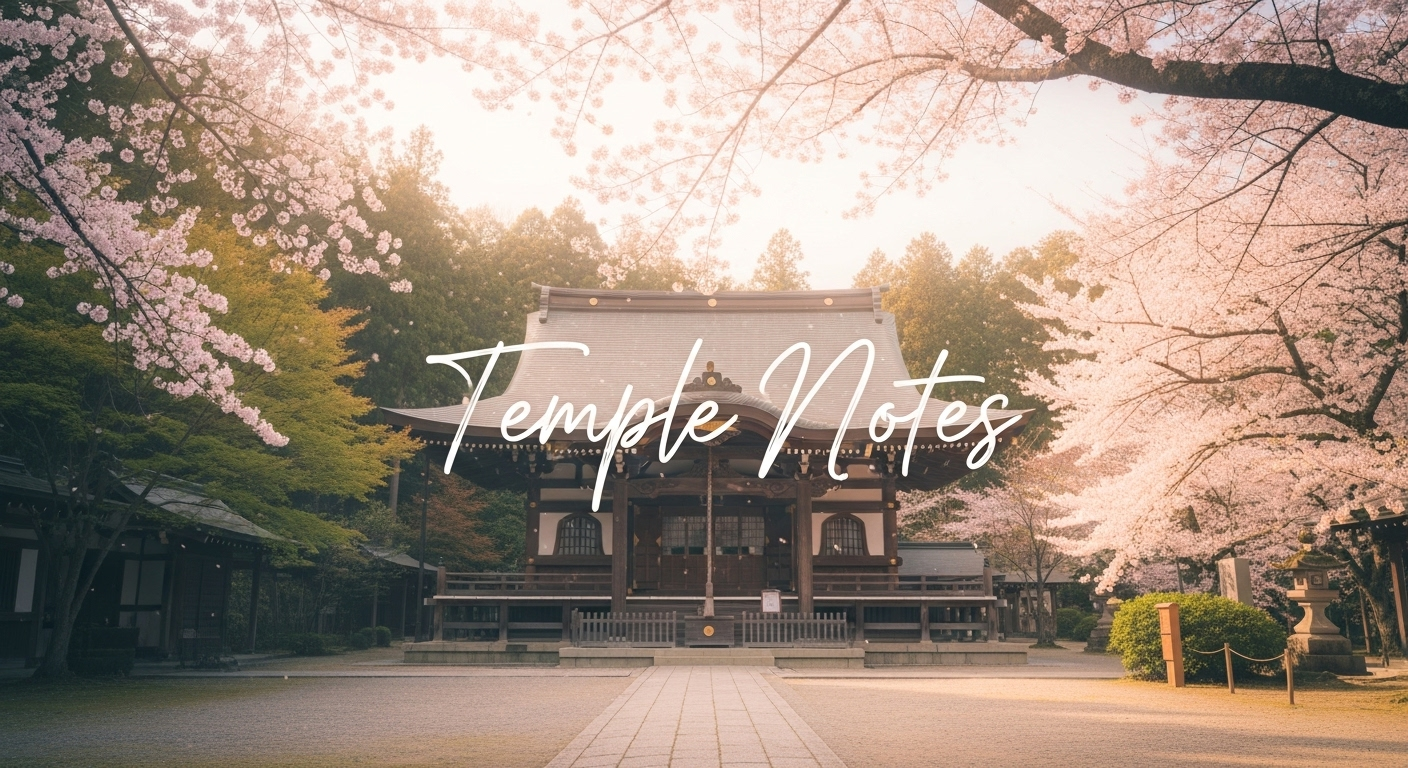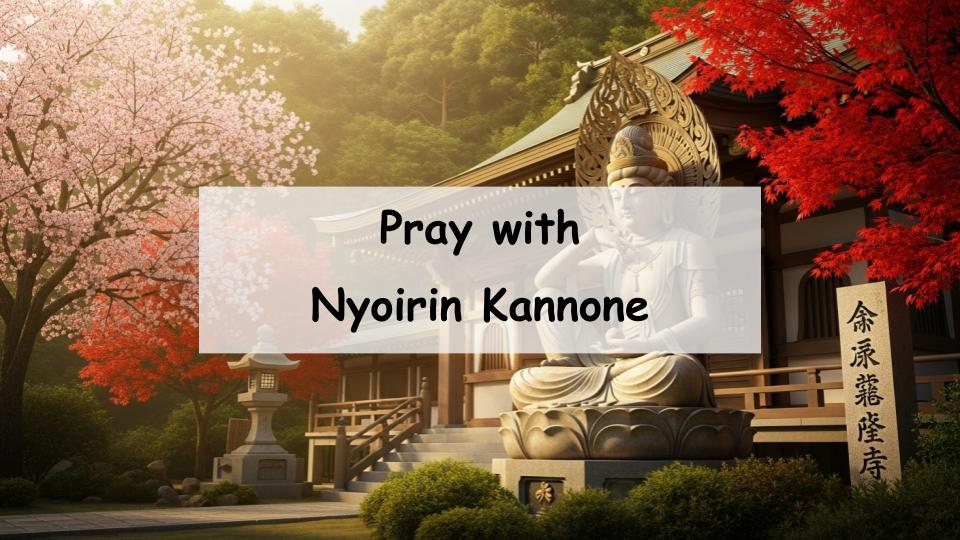“Does visiting Nyoirin Kannon Bosatsu bring any blessings?” “Where can I find temples that enshrine this deity?” — These are common questions among those interested in Buddhist faith and temple visits in Japan.
Nyoirin Kannon Bosatsu, known as the “Wish-Fulfilling Bodhisattva,” has long been revered for granting wishes, easing suffering, and bringing peace to the heart.
In this article, we introduce three famous temples dedicated to Nyoirin Kannon Bosatsu, explaining their spiritual benefits, highlights, and tips for visiting. By the end, you’ll discover sacred places where your prayers and hopes may find a gentle answer.
- What Is Nyoirin Kannon Bosatsu? Origins and Blessings
- Three Famous Temples Dedicated to Nyoirin Kannon Bosatsu
- The Spread of Nyoirin Kannon Faith
- How to Worship Nyoirin Kannon
- Conclusion: Entrust Your Heart to Nyoirin Kannon for Peace and Fulfillment
- A Message from the Guide
What Is Nyoirin Kannon Bosatsu? Origins and Blessings
Origins and Characteristics of Nyoirin Kannon
Nyoirin Kannon Bosatsu is one of the many forms of Kannon (Avalokiteśvara), the Bodhisattva of Compassion. Originating from India and transmitted through China, the belief in this deity took on unique characteristics in Japan through Esoteric Buddhism and Pure Land traditions. Nyoirin Kannon is especially associated with granting worldly benefits and emotional salvation, attracting believers from all walks of life—from ancient nobility to common people.
Appearance, Attributes, and Symbolism
The name “Nyoirin” literally means “wish-fulfilling wheel.” The Bodhisattva often holds symbolic objects such as a jewel or a lotus, representing wisdom, compassion, and the power to grant wishes. Nyoirin Kannon is typically depicted seated, sometimes in the half-lotus (hankaza) posture, with a serene expression that conveys infinite mercy. Each gesture and attribute expresses an aspect of the deity’s ability to answer prayers and relieve suffering.
Main Blessings of Nyoirin Kannon Bosatsu
Nyoirin Kannon Bosatsu is believed to offer blessings such as wish fulfillment, healing from illness, protection from misfortune, safe childbirth, prosperity, and emotional peace. Beyond worldly benefits, this Bodhisattva is also seen as a spiritual guide who calms the heart and encourages self-reflection. When praying, it is important to hold a sincere and specific intention.
Three Famous Temples Dedicated to Nyoirin Kannon Bosatsu
1. Kanshin-ji Temple, Osaka — Home to Japan’s Oldest Nyoirin Kannon Statue
Nestled in the serene mountains of Osaka, Kanshin-ji Temple is one of the most important sites for Nyoirin Kannon worship. The temple’s peaceful atmosphere and natural surroundings make it a perfect place for meditation and prayer. The principal image of Nyoirin Kannon here is regarded as one of the oldest in Japan, embodying the deep connection between the deity and human wishes. Visitors often come to pray for personal goals, family safety, and spiritual guidance.
Blessings and Main Image
The statue of Nyoirin Kannon at Kanshin-ji has a calm and compassionate expression, offering comfort to those who seek help. The temple is known for its blessings related to health, family harmony, and wish fulfillment. Participating in special prayer ceremonies or goma fire rituals deepens the spiritual experience.
Highlights and Historical Background
The temple grounds are surrounded by lush greenery and feature historical architecture and stone monuments. Walking through the temple precincts evokes a sense of timeless tranquility. Learning about the temple’s history and legends enhances the depth of your visit.
2. Chūgū-ji Temple, Nara — The Smiling Kannon of Prince Shōtoku
Located near Hōryū-ji in Nara, Chūgū-ji Temple is closely associated with Prince Shōtoku, a key figure in early Japanese Buddhism. The temple’s famous half-lotus statue of Nyoirin Kannon is celebrated for its gentle smile and refined elegance, representing both spiritual serenity and artistic excellence. Visiting Chūgū-ji allows you to experience the harmony between faith, beauty, and history.
The Beauty and Meaning of the Half-Lotus Statue
The half-seated posture symbolizes meditation and compassion. The soft smile of the statue has been described as “the smile of enlightenment,” offering peace and calm to all who gaze upon it. The figure embodies both spiritual depth and artistic mastery, bridging devotion and aesthetics.
Blessings and Visiting Tips
Visitors come to Chūgū-ji to pray for healing, emotional peace, and safe childbirth. The temple maintains a serene and sacred atmosphere, encouraging quiet contemplation. When visiting, observe proper etiquette—remain calm, take your time in prayer, and appreciate the quiet energy of the space.
3. Hōbodai-in Gantoku-ji Temple, Kyoto — Preserving Heian-Era Faith in Modern Times
Hōbodai-in Gantoku-ji Temple in Kyoto is a historic temple that preserves the spirit of Heian-period Kannon devotion. The temple enshrines a revered statue of Nyoirin Kannon, symbolizing centuries of faithful prayer. Its tranquil atmosphere invites visitors to connect with the sacred traditions of ancient Japan.
The Origin and Features of the Nyoirin Kannon Statue
The temple’s Nyoirin Kannon statue, believed to date back to the Heian period, embodies both artistic refinement and deep compassion. The gentle features and subtle hand gestures of the statue express the Bodhisattva’s vow to listen to all prayers.
Blessings and Highlights
Gantoku-ji is known for blessings of healing, family safety, and prosperity. Visitors can enjoy the temple’s quiet beauty, participate in recitations or sutra copying, and receive goshuin (temple stamps) as a record of devotion. Visiting during special prayer events offers a more profound connection with the temple’s faith.
The Spread of Nyoirin Kannon Faith
The Place of Nyoirin Kannon in Buddhist Belief
Kannon devotion has long been a central part of Japanese Buddhism, focusing on compassion and salvation for all beings. Within this tradition, Nyoirin Kannon gained popularity for offering tangible, worldly blessings. As Buddhism integrated into daily life, temples became sanctuaries where people sought both spiritual and practical relief from suffering.
Nyoirin Kannon and Heian-Period Aristocratic Culture
During the Heian era, devotion to Nyoirin Kannon flourished among the nobility, blending with the aesthetics and rituals of court culture. The deity’s image appeared not only in religious ceremonies but also in art, literature, and decorative crafts. This fusion of faith and beauty helped establish the enduring legacy of Nyoirin Kannon in Japanese spirituality.
How to Worship Nyoirin Kannon
Proper Etiquette and Prayer
When visiting a temple, begin by purifying your hands and mouth at the chozuya (water basin), then proceed quietly to the main hall. Offer a bow, light incense or candles if permitted, and recite a brief prayer or mantra with sincerity. Participation in temple rituals such as sutra copying or goma fire ceremonies can enhance your spiritual experience.
A Mindset for Receiving Blessings
The most important aspect of worship is sincerity. Nyoirin Kannon responds not only to spoken wishes but also to genuine intention and humble action. Rather than merely asking for results, approach your prayer as an opportunity for self-reflection and gratitude. By maintaining a calm heart and pure intention, you align yourself with the compassionate energy of the Bodhisattva.
Conclusion: Entrust Your Heart to Nyoirin Kannon for Peace and Fulfillment
Nyoirin Kannon Bosatsu, the Bodhisattva of Wish Fulfillment, continues to inspire faith and comfort across generations. Through the temples of Kanshin-ji, Chūgū-ji, and Hōbodai-in Gantoku-ji, we have explored the beauty, blessings, and meaning of this compassionate figure. Each temple offers not only a place of prayer but also a sanctuary for reflection and peace.
When you visit, take a moment to breathe, bow, and express gratitude. Whether your wish is for health, happiness, or clarity, Nyoirin Kannon Bosatsu will quietly watch over you — reminding you that peace begins within.
A Message from the Guide

Japanese depictions of Nyoirin Kannon Bosatsu often feature a gentle, serene expression and a graceful, feminine appearance, bringing a deep sense of peace and comfort to the heart.








Comment